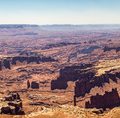Introduction: Navigating America’s Wild Places
When people think of the American wilderness, images of vast forests, rugged mountains, and sweeping deserts often come to mind. From the dense woodlands of the Appalachian Trail to the arid stretches of the Mojave Desert, the United States is home to a remarkable variety of wild landscapes. In these environments, navigation skills have always been vital—not only for explorers and pioneers but also as a central theme in many American survival stories. Whether in classic tales like “The Call of the Wild” or modern accounts from outdoor enthusiasts, knowing how to find one’s way can mean the difference between life and death. This article explores why navigation skills are so significant within the context of America’s diverse wilderness areas and how they shape both legendary and contemporary survival narratives.
2. The American Wilderness: Challenges and Diversity
The vast and varied landscapes of the United States have shaped countless wilderness survival stories, each one highlighting the importance of navigation skills. America’s wild spaces are not only expansive but also present a unique set of challenges depending on the region—ranging from dense forests and towering mountain ranges to arid deserts and sprawling waterways. Each environment tests a survivor’s ability to orient themselves, make critical decisions, and safely find their way back to civilization.
Regional Challenges in the American Wilderness
Survival in the American wilderness often depends on understanding the distinctive traits of each environment. The following table outlines key features and navigation difficulties faced in major American landscapes:
| Environment | Main Challenges | Navigation Demands |
|---|---|---|
| Forests (e.g., Pacific Northwest, Appalachians) | Limited visibility, dense vegetation, confusing terrain | Map reading, compass use, landmark identification |
| Mountains (e.g., Rockies, Sierra Nevada) | Steep slopes, rapidly changing weather, altitude sickness | Route planning, elevation awareness, GPS proficiency |
| Deserts (e.g., Mojave, Sonoran) | Extreme heat, scarce water sources, few landmarks | Sun orientation, resource tracking, emergency signaling |
| Waterways (e.g., Mississippi River, Great Lakes) | Strong currents, unpredictable weather, isolation | Nautical charts, river navigation skills, emergency preparedness |
The Importance of Adaptable Navigation Skills
The diversity of American wilderness settings means that a one-size-fits-all approach to navigation is ineffective. Survivors must be able to adapt their techniques—whether navigating by stars in the desert night or using moss patterns in shadowed forests. This adaptability is a recurring theme in survival accounts from across the country.
Cultural Significance in American Survival Narratives
American wilderness stories often celebrate self-reliance and resilience—traits closely tied to effective navigation. From pioneering settlers crossing prairies to modern hikers tackling national parks, the ability to read the land and find one’s way is both a practical necessity and a symbol of freedom deeply rooted in American culture.
![]()
3. Traditional and Modern Navigation Skills
Navigation has always been at the heart of American wilderness survival stories, shaping both the outcome of adventures and the evolution of outdoor culture. Traditionally, skills like reading topographic maps and using a compass have been essential for explorers, hikers, and hunters to traverse unfamiliar terrain. These foundational techniques require an understanding of cardinal directions, contour lines, and landmarks—skills that have been passed down through generations of American outdoor enthusiasts. The classic image of a backpacker unfolding a weathered map beneath towering pines is deeply embedded in American storytelling, symbolizing self-reliance and resourcefulness.
In recent years, however, there has been a noticeable cultural shift toward modern navigation technologies. Devices such as handheld GPS units and smartphone apps have made route-finding more accessible to a broader range of people. These tools offer real-time location tracking, digital maps, and even emergency communication features, allowing adventurers to venture deeper into the wild with greater confidence. For many Americans, GPS technology represents convenience and safety—a way to minimize risk while maximizing exploration.
This shift has sparked ongoing discussions within the outdoor community about the balance between tradition and innovation. While some purists argue that reliance on technology can erode essential wilderness skills, others embrace modern devices as valuable supplements rather than replacements. In fact, many seasoned adventurers advocate for blending both approaches: carrying a compass and map as backups in case batteries fail or signals drop, while also utilizing GPS for efficiency and precision. This hybrid mindset reflects the adaptive spirit that characterizes American wilderness culture—respecting time-honored methods while embracing new tools to enhance survival and storytelling in the great outdoors.
4. Critical Decisions: Turning Points in Survival Stories
Navigation skills often make the difference between life and death in American wilderness survival stories, both real and fictional. The ability to interpret landscapes, read maps, and use tools like a compass or GPS frequently determines whether a person finds safety or becomes further lost. In this section, we will analyze several pivotal moments from well-known survival accounts where navigation was at the heart of critical decision-making.
Key Survival Accounts: Real vs. Fictional
| Story Type | Title/Individual | Critical Navigation Decision | Outcome |
|---|---|---|---|
| Real | Aron Ralston (“Between a Rock and a Hard Place”) | Misjudged canyon complexity; failed to leave route plan | Became trapped; survived due to self-rescue and eventual navigation back to safety |
| Fictional | “Hatchet” by Gary Paulsen | Main character uses sun position and river flow for orientation | Finds shelter, food, and ultimately signals for rescue |
| Real | Cody Lundin (Survival Instructor) | Emphasized dead reckoning and landmark memory during training mishaps | Avoided dangerous situations through proactive route planning |
| Fictional | “The Revenant” (inspired by Hugh Glass) | Followed rivers and stars after being left for dead | Survived extreme conditions and navigated back to civilization |
The Moment of Choice: How Navigation Influences Outcomes
In each of these stories, the protagonist faces a turning point—often when the terrain becomes confusing, weather changes unexpectedly, or resources dwindle. At these moments, navigation skills become crucial. For example:
- Route Selection: Choosing whether to follow a river downstream (which usually leads to civilization) or strike out cross-country can be a life-or-death decision.
- Error Recognition: Recognizing when one is off-course and making the call to backtrack versus pushing ahead prevents deeper disorientation.
- Tool Use: The ability to use basic tools such as a compass—or even natural indicators like moss growth and sun position—often guides individuals toward safety.
Larger Lessons from American Wilderness Narratives
The recurring theme in these survival stories is that preparation and knowledge are just as important as physical endurance. Navigational mistakes are common triggers for crisis points, but quick thinking and foundational skills can turn the tide. These tales emphasize that while technology helps, traditional navigation methods remain relevant in Americas vast wild places.
5. Teaching Navigation: Lessons from Outdoor Education
Navigation skills are a cornerstone of outdoor education in the United States, with organizations and programs dedicated to preparing individuals—especially youth—for real-life wilderness scenarios. Groups like the Boy Scouts of America, Girl Scouts, and various outdoor education initiatives embed navigation into their curricula, using both traditional techniques and modern technology. Through hands-on experiences, such as map-and-compass exercises, orienteering challenges, and GPS-based scavenger hunts, participants learn to interpret topographical maps, identify landmarks, and plan safe routes through unfamiliar terrain.
Survival training camps across the country take these lessons further by simulating emergency situations where navigation becomes a matter of safety and resilience. Trainees might be tasked with finding their way back to base camp using only a compass and natural indicators like the position of the sun or moss growth on trees. These immersive experiences foster critical thinking, adaptability, and teamwork—skills frequently highlighted in American wilderness survival stories.
Outdoor educators emphasize not only technical competence but also decision-making under pressure. For example, instructors teach students how to recognize when they are lost and how to implement strategies such as “STOP” (Stop, Think, Observe, Plan), a widely taught method in U.S. survival training. By practicing these techniques in controlled environments, participants gain the confidence needed to face unpredictable situations in the wild.
This educational approach reflects a broader American cultural value: self-reliance in nature. By teaching navigation skills early and reinforcing them through practical experience, outdoor education programs ensure that future adventurers are equipped to handle the same challenges faced by legendary survivalists—and to write their own stories of perseverance and triumph in America’s great outdoors.
6. Conclusion: The Enduring Value of Navigation Skills
As we reflect on the role of navigation skills in American wilderness survival stories, it becomes clear that these abilities are far more than relics of a bygone era. Navigation remains a cornerstone of survival, deeply woven into the fabric of American outdoor culture and adventure. While GPS devices and digital maps have revolutionized how we traverse wild landscapes, the fundamental skills of reading a compass, understanding topography, and interpreting natural landmarks continue to hold profound relevance.
In many iconic American survival tales—from the daring journeys of pioneers crossing the frontier to modern search-and-rescue accounts—navigation is not just about finding one’s way; it is about resilience, resourcefulness, and self-reliance. These stories remind us that technology, while helpful, can fail due to battery loss, poor signal, or unexpected circumstances. In those moments, traditional navigation skills become a lifeline.
The enduring value of navigation lies in its ability to connect us with the land and our own capacities. It fosters confidence, situational awareness, and a deeper appreciation for the complexity and beauty of America’s wild places. As we teach new generations how to navigate both with and without technology, we ensure that the spirit of adventure—and the wisdom needed to survive—remains alive and well in our culture.


